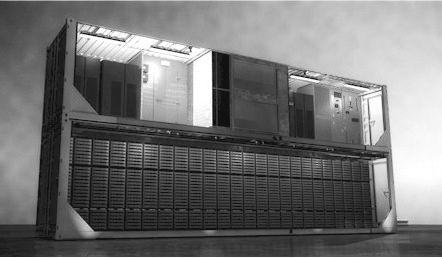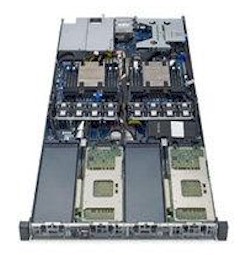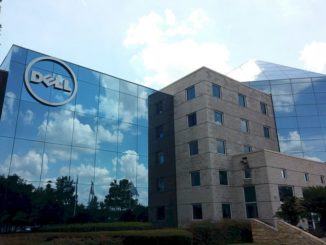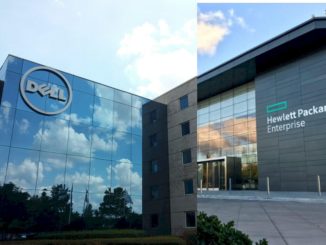
It has been a year and a half since IT supplier Dell went private, and the company is reveling in the fact that competitors can no longer peer into its financials to look for weaknesses and that it can make decisions privately and for the long-term rather than make them publicly and largely on the much shorter-term that all public companies have to align to. But Dell still needs to be out there, giving some insight into how it is doing and how it plans to extend its scope and depth in the IT market.
To that end, some of the top brass in Dell’s Enterprise Solutions Group – the part of the company that is made up of its server, storage, and networking hardware businesses as well as systems software that runs on these devices – sat down with The Next Platform in New York to talk shop.
Specifically, we had a chat with Ashley Gorakhpurwalla, general manager of servers at Dell, and Tracy Davis, general manager of the company’s Data Center Solutions custom server business. And we started off by observing that with Dell not being public any longer, we don’t have any numbers to judge it by. “No you don’t,” Gorakhpurwalla said with a laugh, which Davis shared in heartily.
Dell just completed its fiscal year, but Gorakhpurwalla was not about to spill any numbers. But he did cite the most recent IDC figures in the server market, which show Dell growing its revenues in the double digits, and bragged a bit that Dell was the only server vendor to grow sequentially and year-on-year in Q4.
“Almost everyone had an interesting Q4 or were not growing year on year,” Gorakhpurwalla says. “Our growth is kind of across the board. We don’t have an area that I would say is the reason we are growing at 2X the market. Servers are still a very good market, and still one that we are very successful in. Speaking regionally, we are consistent in all geographies. Europe is tough for everyone. You can’t have the euro fall by 30 percent and not be effected. We make the joke that we don’t have to translate from euros to dollars anymore. Across all server types regionally, we are still number one in Asia, and number two in Europe where HP is very strong. In the United States, you have to carve out enterprise distinct from cloud/direct, and in that case we are either one or two.”
“The challenge you have is that if you say DCS is a great model for those top seven, that just doesn’t scale in terms of OpEx or any kind of business model. And if you are doing one-off, snowflake designs for each one of these companies, it doesn’t make much sense, either.”
The workhorse rack server is still what dominates at Dell, and Gorakhpurwalla says that while the company has just launched a four-socket PowerEdge R930, the company does not have any plans to push the Intel chipset harder and scale up to eight sockets using the new “Haswell-EX” Xeon E7 v3 processor.
In general, Dell tends to skew is shipments a little more towards two-socket machines and a little bit away from four-socket machines compared to the market at large – something like 10 percent single socket, 80 percent dual sockets, and 10 percent quad sockets. Like other server makers we have talked to, Dell concurs that the Chinese market likes four-socket machines, but most customers who buy four-socket systems do not buy top-bin Xeon E7-4800 processors (or Xeon E5-4600 CPUs if they go the cheaper, less memory intense route) and many do not fully populate their systems. They want upgrade capacity within their existing server footprints, apparently.
“With the enterprise segment, most of the growth is in rack form factors and mostly two-sockets, of course,” explains Gorakhpurwalla. “We do okay in tower, but it is pretty much flat to down. With blades, we hold our share but it is not a big grower for Dell. And then we can get into semantics – do you count a multinode PowerEdge Vertex as a blade, do you count PowerEdge FX as a blade? The market for traditional blades that we all started shipping six years ago has kind of kneed over a little bit and is not growing as fast. It is still growing, and I can see that continuing.”
Hyperscale And HPC Are Similar But Different
Like The Next Platform, Dell does not use the term cloud to describe hyperscalers, and sees these customers are having distinct machine design points and volume and pricing needs. In fact, Dell has a dedicated business, with annual sales in excess of $1 billion, peddling machines specifically aimed at the top hyperscalers and their peers a little bit down on the volume scale. We reckon there are about 300 or so such companies that have sufficient volumes to justify a custom server design and a dedicated engagement. Dell is thinking a bit more broadly.
Dell founded its Data Center Solutions business in May 2006 and started talking publicly about it two years later, in the belly of the Great Recession, when it wanted to show off a bit about the fact that it had quietly built up a custom server business that, if separated from Dell, would rank as the fifth largest server maker in the world. The company did not give any revenue specifics for DCS back then, but in 2012, Forrest Norrod, who now runs the custom and enterprise chip business at AMD, said that it had exceeded $1 billion in sales and Davis confirmed that sales rate to us at Dell World in 2013 without being more specific. When pressed for a more precise figure, Gorakhpurwalla says: “We still don’t really say numbers, but the number that you threw out is the number that we are growing from, so it is a reasonable assumption that it is more than that now.”
The loss of Facebook as the cornerstone DCS customer does not seem to have diminished its revenue stream in the long term, and neither has the fact that Google has not (as far as we know) ever commissioned Dell to make any of its iron, either. Without naming names, Dell says that DCS makes iron for four of the five largest search engines and cloud service providers, twelve of the fifteen most visited web sites, and three of the top four social media sites. DCS has also built more than 130 modular datacenters for these hyperscalers.
“We have added customers,” Davis says of the bespoke server unit. “We have expanded DCS to focus beyond the original big seven, which was Google, Amazon, Facebook and Microsoft in the United States and then Baidu, Alibaba and Tencent in China. As the Web has grown, as people want to do cloud, either private or hybrid, the attributes that the big guys have wanted are really starting to descend down into the enterprise space. You also have sociology affecting things: People who used to work for Google, Facebook, Baidu, and so on are going to different companies and they are taking the attributes – SKU consolidation, ubiquitous computing, software resiliency – from those companies with them. These attributes, which resonate with companies with more than 100,000 servers, are starting to move down the food chain. We are looking at this and reacting to it in a unique way. We are not doing a joint venture and saying we have a shiny new object.”
This is exactly the kind of transition that The Next Platform was created to follow. But don’t think that hyperscale is coming to everybody, and if there is one thing that Davis wants to never do, it is to leave anyone with that impression.
“Hyperscale includes some of the telcos, other e-commerce and search engine suppliers, web hosters, and oil and gas simulation centers,” Davis says, explaining how Dell chops up the market. “There are probably twenty companies that replicate what the top seven hyperscalers do, and beyond that, there are probably a thousand more. The challenge you have is that if you say DCS is a great model for those top seven, that just doesn’t scale in terms of OpEx or any kind of business model. And if you are doing one-off, snowflake designs for each one of these companies, it doesn’t make much sense, either.”
“We were there in Facebook’s cafeteria when Open Compute was founded. We continue to have Dell technical people on various committees, and from the beginning we agreed with the principle of open and having capability that was useful across many applications, and using the economics of high volume and standards.”
What has made sense for Dell and its DCS unit is building deep relationships with customers, like the one that Dell had with Facebook before the social network established the Open Compute Project to get multiple sources for its iron and to presumably drop the price it was paying because it was doing the designing, and like the relationship that Dell still has with Microsoft since the software giant initiated its Project Red Dog effort in 2007 that eventually became the Azure cloud.
The interesting bit about Microsoft is that it is now a big supporter of the Open Compute effort, and it is trying to benefit from standardized yet multisourced systems. HP and Dell were making custom gear for Microsoft for years, and now they are making clones of Microsoft’s own designs to sell to Microsoft, which has over 1 million machines, and to those who want to use the same iron that Microsoft does.
As far as Dell knows, people are “still kicking the tires” on Microsoft’s Open Cloud Server design, even though HP, Dell, Quanta, and a few others are building versions of the machine.
“We were there in Facebook’s cafeteria when Open Compute was founded,” Gorakhpurwalla reminded us. “We continue to have Dell technical people on various committees, and from the beginning we agreed with the principle of open and having capability that was useful across many applications, and using the economics of high volume and standards. But to use an extreme example, it would be very difficult in our industry if every customer wanted things a little bit tweaked. It would just collapse upon itself. Using standards and building an ecosystem around it is awesome – that’s what we do. But we, meaning Dell and others on the strategic supplier side, are still struggling to find the right ROI and an uptick in demand. The concept of open sourcing the hardware is a fine premise. Microsoft has enough volume to donate in and get back out something that fits their datacenters, their online properties, and their capital structure quite nicely. Will it fit for everybody’s datacenters, capabilities, and engineering know how? Maybe not. Customers like the concept, and maybe they can multi-source and have some leverage in their negotiations with their suppliers. But we are not seeing that turn into any sort of commercial success just yet for Dell. But we are really interested in pushing that forward.”
On the HPC front, the PowerEdge C4130 is the popular box right now, which crams two “Haswell” Xeon E5 v3 processors, up to 256 GB of memory, and up to four 300 watt accelerators into a 1U rack chassis. The PowerEdge FX modular system launched last year has PCI-Express 3.0 slots, but it cannot power and cool the biggest and baddest accelerator cards, so there are some limitations there.

Dell is not commenting on whether or not it will offer compute nodes based on Intel’s impending “Knights Landing” massively parallel processor, but Gorakhpurwalla says that Dell will support Intel’s Omni-Path kicker to InfiniBand networking, and that “the whole area around fabrics is interesting.” Two years ago, nobody was talking about 25 Gb/sec links on servers and 50 Gb/sec and 100 Gb/sec links on switches, until the cloud builders and hyperscalers started pushing for it. “I think that 25GE is going to lay over on 10GE soon,” says Gorakhpurwalla, “and then customers will have some real choices to make. Do they want 10GE or would that rather have 25GE that sits on top of it and has a path to 50GE and 100GE? I think there will be an early adopter phase, but we think that 25GE will hit at least some portions of the mainstream.”
The interesting bit that we learned from Davis is that even the hyperscalers in China don’t run their networks above 10 Gb/sec speeds because faster networks are too expensive for them for most of their applications. “It will continue to expand, but China is going to be behind on the networking side for a while,” says Davis.
The Other Kind Of Hyper
Dell has just completed the rollout of the PowerEdge FX modular machines with the addition of dense storage module, which Gorakhpurwalla says many customers were waiting for Dell to deliver. (We are working on a separate feature on modular system designs and will discuss this then.) Dell just inked a deal for 10,000 FX units in Asia, and there is a Chicago financial services firm that has placed a big order, and even a few companies in the Europe and the Middle East have adopted it already, too. “Typically we are good at developing something and selling it in major developed countries, but with FX it is maybe running a little bit ahead of us pushing it, selling itself a little bit,” Gorakhpurwalla says.

With the converged and modular design of the PowerEdge FX system you might be thinking that this box would be well suited to hyperconverged software that brings virtual servers and virtual SANs together under the same skins. Dell is examining that in conjunction with its key software partner, Nutanix.
“We’re letting that be a Nutanix call,” says Gorakhpurwalla. “We want to make sure that what we end up with is perfectly optimized.” That said, Dell is working to port Nutanix to PowerEdge-C machines as well as on FX modular systems in addition to the special PowerEdge XC line that it created specifically to run the Nutanix software. Dell is also looking at VMware VSAN and other hyperconverged software stacks that are a good fit for FX. Whether these ports get productized remains to be seen.





Be the first to comment